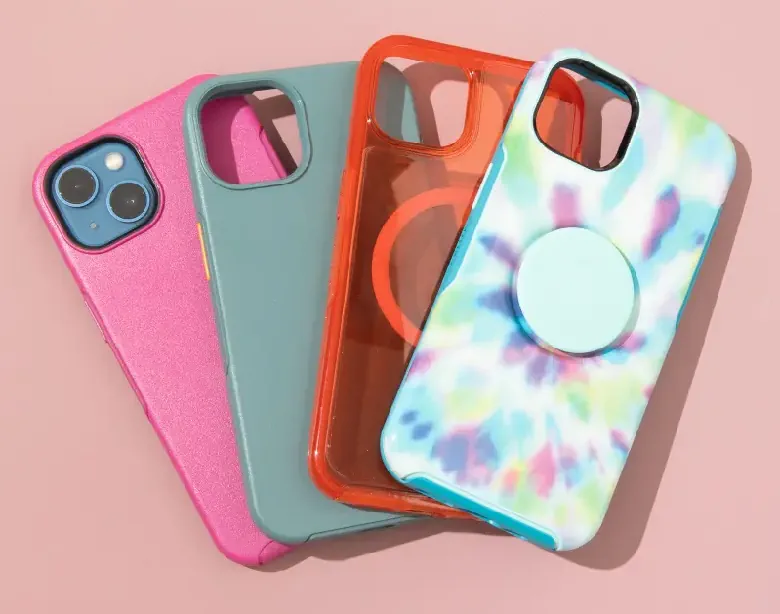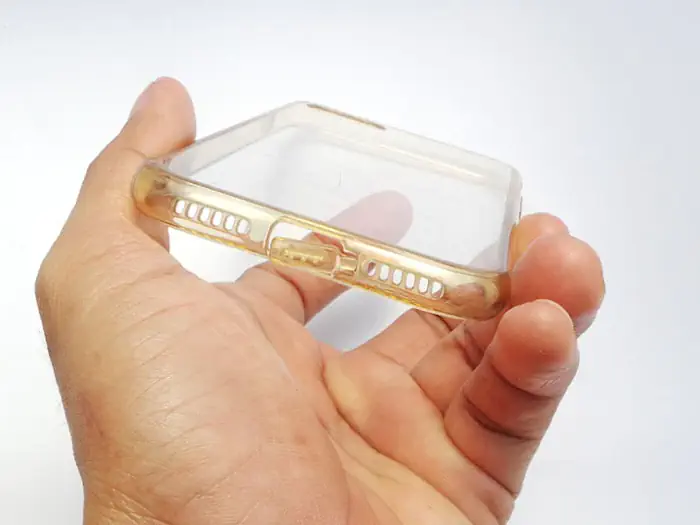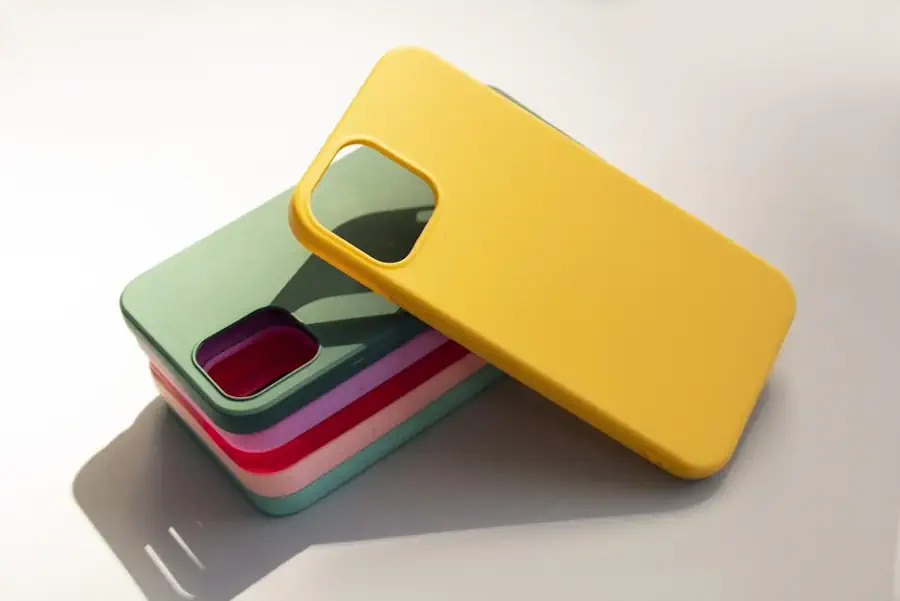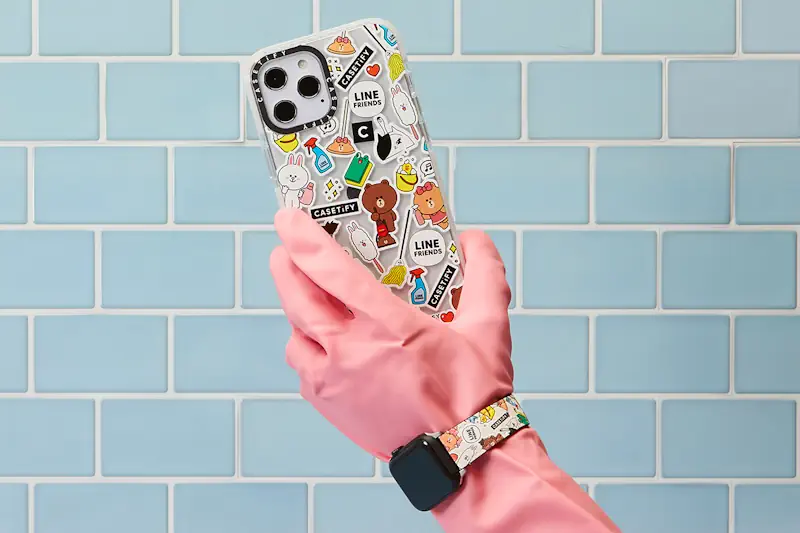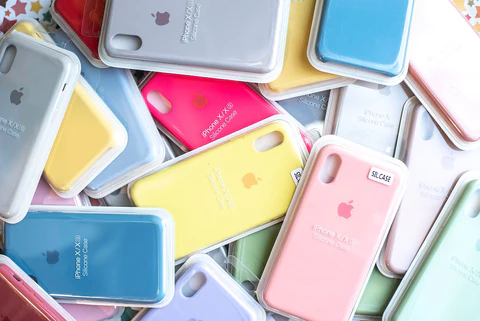You may be wondering how to choose a phone case if you’ve never owned one before.
Visiting any phone or accessories store immediately bombards you with an infinite number of options, colors, designs, features… your head is probably spinning from all of those choices…
Picking a phone case might sound simple, but it’s kind of like picking an outfit – it says a lot about you.
Let’s explore together all the things that you should consider when choosing a phone case. Worry not, we will make sure you pick the exact perfect phone case for your phone and personality.

Factors to consider when choosing a phone case
Here is a list of all things you should consider while choosing a phone case:
- Start with your budget
- Consider your phone model
- Determine your protection needs
- Choose the right material
- Slim vs. rugged cases
- Style and aesthetics
- Functionality and features
- Durability and longevity
- Compatibility with accessories
- Wireless charging compatibility
- Think about your budget
- Warranty and return policy
Start with your budget
When choosing a phone case, I recommend to start your budget. Even though phone cases are usually inexpensive, different people will work with different budgets that they may not be able to change, so it’s best to start there.
Phone cases can range in price from a few dollars to over $100. The price will vary depending on the brand, the materials used, and the features of the case.
Here is a table with prices for different types of phone cases:
| Type of phone case | Price |
|---|---|
| Silicone case | $5-$10 |
| TPU case | $5-$10 |
| Hard plastic case | $3-$5 |
| Folio case | $10-$20 |
| Wallet case | $15-$25 |
| Rugged case | $20-$50 |
| Waterproof case | $25-$50 |
| Premium leather case | $50-$100+ |
| Designer case | $100+ |
Tips for choosing a phone case on a budget
- Look for sales and discounts. Many retailers offer sales and discounts on phone cases throughout the year. You can also find discounts by shopping online.
- Consider buying a generic case. Generic phone cases are typically less expensive than branded cases. They are also available in a wide variety of styles and colors.
- Shop at discount retailers. Discount retailers often sell phone cases at a lower price than traditional retailers.
- Look for refurbished cases. Refurbished phone cases are cases that have been returned to the manufacturer and have been repaired or cleaned. Refurbished cases are typically less expensive than new cases.
Consider your phone model
There are a few reasons why it is important to choose a case that is compatible with your phone model:
Fit
Phone cases come in different sizes and shapes, so it is important to choose a case that fits your phone perfectly. A case that does not fit your phone properly may not be able to provide adequate protection.
Features
Some phone cases have features that are specific to certain phone models. For example, some cases have built-in screen protectors or kickstands. If you want to use these features, it is important to choose a case that is compatible with your phone model.
Protection
Phone cases are designed to protect your phone from scratches, drops, and other damage. A case that is not compatible with your phone model may not be able to provide adequate protection.
To find a phone case that is compatible with your phone model, you can search for cases that are specifically designed for your phone model. You can also ask a salesperson at a phone store for assistance.
Tips for choosing a phone case that is compatible with your phone model
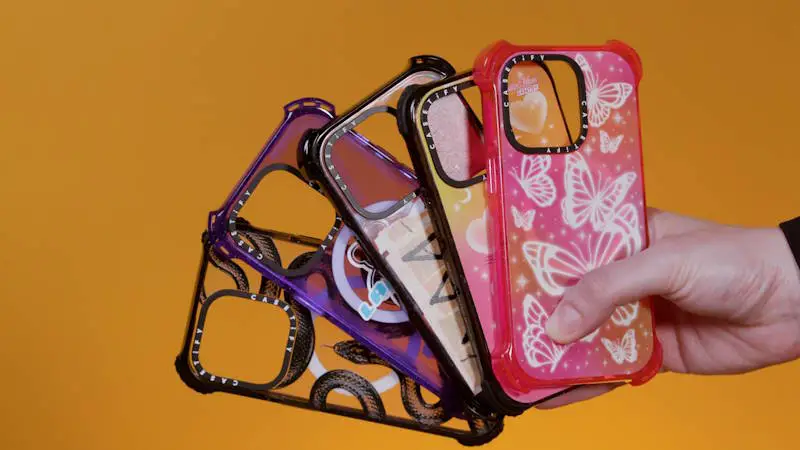
Here are some tips and considerations to help you choose the perfect phone case that is compatible with your specific phone model.
Check the compatibility information before you buy
Most phone cases will have a list of compatible phone models on the packaging or on the website of the retailer.
Ask a salesperson for assistance
If you are still unsure which case is compatible with your phone model, ask a salesperson at a phone store for assistance.
Signal to the salesperson what you’re looking for, and they should be able to provide guidance and recommendations based on your requirements.
Still, I never rely too much on salespeople in any of my buying choices, since I know they typically have an agenda and an incentive. I recommend asking around but still making your own choice in the end and not being too easily influenced.
Read reviews
When reading reviews of phone cases, pay attention to whether the reviewers are using the same phone model as you. This will help you to get a better idea of how the case will fit and perform on your phone.
Determine your protection needs
When determining your protection needs for a phone case, consider the following factors:
- How often do you drop your phone? If you drop your phone frequently, you’ll need a case that provides more protection against drops and impacts.
- If you drop your phone frequently, you may want to choose a case that is made of a durable material, such as silicone or TPU.
- What kind of activities do you do with your phone? If you’re active or work in a hazardous environment, you’ll need a case that can withstand more wear and tear.
- If you are active or work in a hazardous environment, you may want to choose a case that is water resistant or dustproof.
- Do you have any special needs? For example, if you have children or pets, you may want a case that is more durable or has a built-in screen protector.
- If you have children or pets, you may want to choose a case that is more durable or has a built-in screen protector.
- What are the most common ways that you damage your phone? (e.g., dropping it, scratching it, getting it wet)
Choose the right material
Here is a brief overview of the most common phone case materials:
Plastic
Plastic cases are the most common type of phone case. They are lightweight, affordable, and come in a wide variety of colors and styles.
However, plastic cases can be less durable than other materials, and they may not provide enough protection for people who drop their phones frequently.
Silicone
Silicone cases are another popular type of phone case. They are flexible, shock-absorbent, and easy to grip. Silicone cases are also relatively affordable and come in a variety of colors and styles.
However, silicone cases can be more difficult to clean than other materials, and they may attract dust and lint.
Leather
Leather cases are stylish and durable. They offer good protection against drops and scratches, and they can also help to keep your phone cool. However, leather cases can be more expensive than other materials, and they may not be as comfortable to hold as other materials.
Metal
Metal cases are the most durable type of phone case. They offer excellent protection against drops and scratches. However, metal cases can be heavy and bulky, and they can also interfere with wireless charging.
Personal opinion for choosing the right material
I find that silicone cases offer a great balance of protection and aesthetics. Firstly, they’re incredibly durable and shock-absorbent. Given my profession, I’m often on the move and sometimes in situations where my phone might accidentally get bumped or dropped. Silicone cases have saved my phone from many potential disasters.
What really appeals to me is the grip and texture of silicone cases. They feel comfortable and secure in my hand. Unlike smooth plastic or slippery metal cases, silicone provides a non-slip surface, reducing the chances of accidental drops, which can be quite frustrating.
In contrast, while leather cases have an elegant and classic appeal, I find that they can be quite costly and might not offer the same level of impact protection. Metal cases, while robust, can sometimes interfere with signal reception, which can be inconvenient.
Silicone cases, for me, strike the perfect balance between protection, aesthetics, and functionality, making them my top choice for safeguarding my phone while expressing my personal style.
Slim vs rugged cases
I appreciate rugged cases for their robust protection, especially in my on-the-go profession, and the secure grip they offer.
However, their bulk and utilitarian design sometimes clash with my style preferences.
Conversely, I’m drawn to slim cases for their sleek profile, diverse designs, and the ability to match my personal style. Yet, their minimalistic protection and potential lack of grip in certain situations can be a concern.
The choice between rugged and slim cases ultimately hinges on the need for maximum protection versus maintaining a stylish and slim phone profile, often determined by the context of use and personal style.
Let’s compare the two and see when each might make more sense for you.
| Feature | Slim case | Rugged case |
|---|---|---|
| Weight | Lightweight | Heavier |
| Size | Slim | Bulkier |
| Protection | Offers some protection against scratches and bumps | Offers more protection against drops and impacts |
| Price | Less expensive | More expensive |
| Style | Available in a variety of colors and styles | More limited selection of colors and styles |
Slim cases
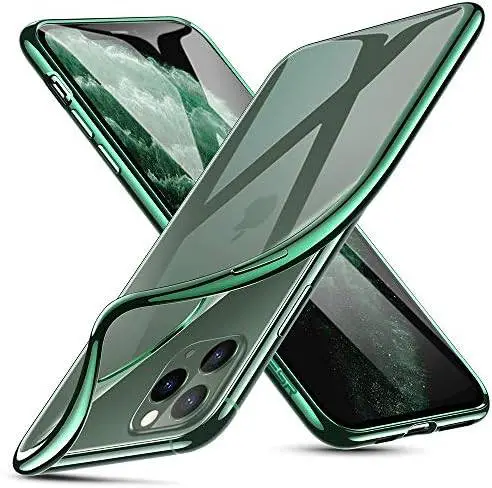
Slim cases are lightweight and stylish. They offer some protection against scratches and bumps, but they may not be enough to protect your phone from a serious drop or impact. Slim cases are a good option for people who are careful with their phones and don’t need a lot of protection.
Rugged cases

Rugged cases are more durable and offer more protection than slim cases. They are typically made from a hard plastic or silicone material, and they often have features like raised edges and reinforced corners to help protect your phone from drops and impacts. Rugged cases are a good option for people who are active or who work in a hazardous environment.
Style and aesthetics
Here are some considerations related to style and aesthetics when selecting a phone case:
- Design Options: Phone cases come in a wide range of designs, from simple solid colors to intricate patterns, artwork, and even branded collaborations. Consider your personal style and preferences when choosing a design that resonates with you.
- Color Choices: The color of your phone case can reflect your personality and style. You can opt for classic black or white, vibrant and bold colors, or even transparent cases that showcase your phone’s original color. Think about what colors you like and what matches your overall aesthetic.
- Texture and Finish: Phone cases are available in various textures and finishes, such as matte, glossy, rugged, or textured surfaces. The choice of texture can impact the grip, feel, and visual appeal of the case. Pick one that suits your tactile preferences.
- Artistic and Custom Designs: If you’re looking to make a statement or showcase your creativity, consider cases with artistic or custom designs. You can find cases with artwork, illustrations, or even create your own custom design to make your phone truly unique.
- Transparency: Transparent or clear cases are a popular choice as they allow the original design and color of your phone to shine through. This is especially appealing if you have a phone with a stylish design or vibrant color.
- Minimalist vs. Bold: Determine whether you prefer a minimalist look that adds little bulk to your phone or a bolder, eye-catching case that makes a statement. Your personal style and the occasions you’ll use your phone for can influence this choice.
- Pattern and Print Choices: Some cases feature popular patterns, prints, or themed designs. These can range from floral patterns to geometric shapes, animal prints, or even pop culture references. Choose one that resonates with your interests.
- Matching Accessories: If you like to coordinate your accessories, consider how the phone case’s design complements other items like your phone wallpaper, screen protector, or even your outfit.
- Brand and Logo Visibility: Some people prefer cases that prominently display the brand logo or a recognizable design. Others may prefer a more subtle or minimal branding approach.
- Seasonal or Occasional Cases: Consider having multiple cases for different occasions. For example, you might choose a sleek case for everyday use and a festive or themed case for holidays or special events.
- Gender and Age Considerations: Different styles and aesthetics may appeal to different genders and age groups. Think about what resonates with you personally and what fits your demographic.
- Trends vs. Timeless: Decide whether you want a case that follows current trends or one with a timeless design that won’t go out of style quickly.
Specific examples of stylish and protective phone cases
- Clear cases: Clear cases allow you to show off the design of your phone. They are also typically lightweight and slim, making them a good option for people who don’t want a bulky case.
- Minimalist cases: Minimalist cases are simple and elegant. They offer good protection without adding a lot of bulk. These are my personal favorite btw.
- Patterned cases: Patterned cases are a fun way to add personality to your phone. They are available in a wide variety of colors and patterns, so you can find one that matches your personal style.
- Textured cases: Textured cases can add grip to your phone and make it less likely to slip out of your hand. They also come in a variety of colors and styles.
- Designer cases: Designer cases are a stylish way to protect your phone. They are often made from high-quality materials and feature unique designs.
Functionality and features
While style and aesthetics are important, the practical aspects of a case can significantly impact your day-to-day use of your phone. Here are some key functionality and feature considerations:
- Built-in screen protectors: Some phone cases have built-in screen protectors that can help to protect your phone’s screen from scratches and cracks.
- Kickstands: Some phone cases have kickstands that can prop up your phone for hands-free viewing.
- Card holders: Some phone cases have card holders that can store your credit cards, ID cards, and other small items. I find this feature in phone cases to be particularly useful.
- Water resistance: Some phone cases are water resistant, which can help to protect your phone from water damage. I also love this feature, and it has saved me from buying a new phone countless times.
- Wireless charging compatibility: Some phone cases are wireless charging compatible, which allows you to wirelessly charge your phone without having to remove the case.
- Belt Clips and Holsters: For those who prefer to wear their phones on their belts, certain cases come with belt clips or holsters for convenient carrying and quick access.
- Sustainability: Some manufacturers offer eco-friendly cases made from sustainable materials. If environmental considerations are important to you, look for such options
- Brand and Warranty: Choose cases from reputable brands known for their quality and customer support. Check if the case comes with a warranty or satisfaction guarantee.
Durability and longevity

You want a case that not only protects your phone but also lasts for an extended period. Here are some key aspects to focus on regarding durability and longevity:
- Material Quality: The material used in the case plays a significant role in its durability. Common materials include silicone, TPU (thermoplastic polyurethane), polycarbonate, leather, and metal. Research the material’s durability and resistance to wear and tear.
- Reinforced Corners: Cases with reinforced corners or shock-absorbing features are better equipped to handle drops and impacts, increasing their longevity by preventing damage to the phone.
- Drop Test Ratings: Some case manufacturers provide drop test ratings, which indicate how much impact the case can withstand. Cases with higher drop test ratings are generally more durable and long-lasting.
- Build Quality: Examine the overall build quality of the case. Ensure that seams are well-constructed, buttons are responsive, and any moving parts (like kickstands) are sturdy.
- Scratch Resistance: Look for cases with scratch-resistant coatings or materials. This helps maintain the case’s appearance over time and prevents it from looking worn.
- Anti-Yellowing Technology: Clear cases, in particular, can turn yellow over time due to exposure to sunlight and environmental factors. Cases with anti-yellowing technology resist this discoloration and remain clear.
- Compatibility with Screen Protectors: If you use a screen protector, ensure that the case is compatible with it. Cases that work well with screen protectors can help prolong the life of your phone’s screen.
- Reinforced Edges: Cases with reinforced edges provide additional protection to vulnerable areas, such as the corners and sides of your phone, which are prone to wear and tear.
- Tight Fit: A case that fits snugly around your phone is less likely to accumulate dirt and debris between the case and the phone, which can cause scratches over time.
Compatibility with accessories
Your phone may be part of an ecosystem of accessories, and the case you select should work seamlessly with these add-ons. Here are some key aspects to keep in mind:
| Accessory Type | Considerations |
|---|---|
| MagSafe Compatibility | Check if the case is MagSafe compatible for easy attachment of MagSafe accessories (e.g., magnetic chargers, wallet attachments). |
| Wireless Charging | Ensure the case doesn’t interfere with wireless charging, as most modern cases are designed to support wireless charging. |
| Car Mount Compatibility | Verify that the case allows for secure attachment to your car mount, especially if it has built-in magnetic plates for easy car mount compatibility. |
| Headphone and Adapter Access | Confirm that the case doesn’t block access to the headphone jack, charging port, or adapter port (e.g., for USB-C to 3.5mm headphone adapters). |
| Camera Attachments | Ensure that the case doesn’t obstruct or interfere with the functionality of additional camera lenses or attachments. Look for precise camera cutouts. |
| Dock Compatibility | Check if the case allows you to dock your phone without hindrance, as some docks have specific size requirements. |
| Smartphone Stands | Consider how the case’s design impacts compatibility with smartphone stands, and explore cases with built-in stands if needed. |
| Audio Quality | Research whether the case affects the audio quality of speakers or microphones during calls or media playback, based on user feedback or reviews. |
| Gaming Accessories | Verify that the case doesn’t obstruct the attachment points or functionality of gaming accessories like controllers or cooling fans. |
| Screen Protectors | Confirm that the case is compatible with separate screen protectors and doesn’t interfere with their proper alignment and functionality. |
| S-Pen or Stylus Compatibility | Ensure that the case doesn’t hinder the removal or use of the stylus for devices that support stylus input like the Samsung Galaxy Note series. |
| External Battery Packs | Check if the case’s design allows for easy connection and attachment of external battery packs or power banks for on-the-go charging. |
| PopSockets or Grips | Assess whether the case’s surface is suitable for attaching accessories like PopSockets or phone grips securely, especially if the back is smooth. |
| Ecosystem Considerations | Consider whether the case can accommodate various accessories and fits within your overall phone accessory ecosystem for versatility. |
Wireless charging compatibility
If you think that wireless charging is a cool feature (which you totally should, btw), then this is worth considering.
Check if the case is compatible with the Qi wireless charging standard, which is the industry standard for wireless charging technology.
Thicker cases or those made from materials that obstruct wireless signals, like metal, may not work well with wireless charging.
Verify that the case allows for proper alignment of your phone on the wireless charging pad to prevent charging issues due to misalignment. Be cautious of cases with built-in magnets or metal plates for magnetic accessories, as they can interfere with wireless charging.
Cases that inhibit heat dissipation can lead to overheating during wireless charging, so opt for cases with proper heat management to maintain safe charging temperatures.
If your phone has brand-specific wireless charging technology like Apple’s MagSafe, make sure the case is compatible with it.
f you have doubts about compatibility, consider testing the case with your wireless charger or consult user reviews and product specifications to confirm its wireless charging compatibility.
Warranty and return policy
The warranty typically includes details about its length, coverage, registration requirements, and the process for making a warranty claim. Longer warranty periods often indicate greater confidence in the product’s durability, and it should cover defects in materials and workmanship.
Additionally, be aware of any registration requirements or the need to keep proof of purchase. Understanding the warranty claim process is essential in case the case has defects or issues.
Regarding the return policy, check the duration within which you can return the case if it doesn’t meet your satisfaction. This period can vary from a few days to several weeks, depending on the retailer.
Ensure that you keep the case in like-new condition with all original packaging and accessories until you decide to keep it, as many retailers require this for returns.
Be mindful of potential restocking fees, especially for opened or used items, and understand the return process, whether it involves contacting the retailer, explaining the reason for the return, and following their instructions.
Confirm whether you can obtain a refund or exchange the case, as well as who covers return shipping costs if applicable.
By familiarizing yourself with these warranty and return policy details, you can make an informed decision when purchasing a phone case and have options in case the case is defective or doesn’t meet your expectations.


